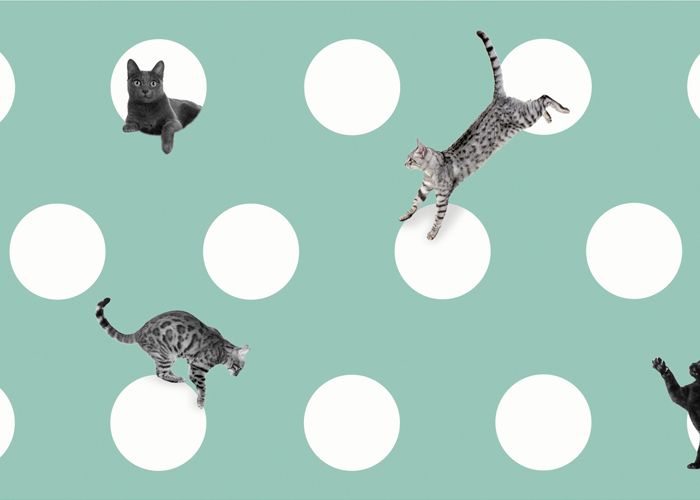

How to Stage and Treat FeLV and FIV—and How to Explain It to Clients
The common feline retroviruses, Feline Leukemia Virus (FeLV) and Feline Immunodeficiency Virus (FIV), are infectious diseases affecting cats and are found worldwide. Although prevalence varies by location, all veterinarians need to be aware of the possibility of infection in their feline patients and be versed in how to communicate the ins and outs of the viruses with their clients.
Even though FeLV and FIV are frequently lumped together, they are very different diseases and should be handled as such. They do have some broad similarities, in that they both affect the cat's ability to have effective immune responses and can contribute to chronic diseases.
Here's what you need to know about the viruses and what to communicate to clients.
Virus Transmission
FeLV is transmitted through close contact between cats over time and is often referred to as the more "friendly" virus. Oronasal infection is most common—although transmission through bite wounds is also possible. FeLV can be transmitted horizontally by grooming and sharing dishes or vertically from the mother to kittens by nursing or grooming. Younger cats are most susceptible to FeLV, but any cat can become infected.
FIV, on the other hand, could be considered the "unfriendly" virus as it is transmitted almost exclusively horizontally through fight wounds. Clinical signs for both FeLV and FIV tend to be vague or absent early in the disease—symptoms may include fever, lymphadenopathy, and malaise. More serious symptoms of stomatitis, immunosuppression, or neoplasia present later in the course of infection.
For both retroviruses, prognosis varies, but FIV tends to have a more favorable prognosis than FeLV, depending on the staging of FeLV infection. An accurate diagnosis of retroviral infection will aid in outlining expectations for the cat and the client and allow for environmental and medical interventions as needed. Consider providing your clients with educational materials on these infections both during a routine wellness exam—so the client knows what to look out for—and also after diagnosis.
FeLV Staging
When cats are exposed to FeLV, what happens next depends on the cat's immune system and the overall potency and volume of the viremic load. The responses and outcomes are generally classified (or staged) as abortive, progressive, or regressive infections. After diagnosis, share the cat's stage with the client so they can know what to expect.
Abortive infections may be more common than is realized. Cats with abortive infections will have antibodies to FeLV, but test negative for antigen, virus DNA, and virus RNA. In a nutshell, these cats have been exposed and mounted a response to the virus, then cleared the infection.
Progressive infections are more aggressive and result from an insufficient immune response and rapid replication of the leukemia virus. Cats with progressive infections have a less favorable prognosis and will usually have a shorter lifespan, ultimately succumbing to FeLV-associated diseases. These cats will typically have positive antigen tests and positive PCR with a higher viral DNA load.
Regressive infections occur after a robust immune response that can control but not stop viral replication. These cats do not shed the virus and are at lower risk of developing FeLV-related diseases unless they become immunosuppressed. If immunosuppression occurs, the virus may become "reactivated," leading to an increased possibility of more agressive clinical disease, such as lymphoma or bone marrow suppression.
FeLV and FIV Treatment
Although prevention isn't always possible, it is the best protection from FeLV or FIV infection. Since younger cats are most vulnerable to FeLV infection, be sure to educate clients on the importance of vaccination against the virus. Depending on the cat's lifestyle, the vaccine may or may not be continued after reaching adulthood. There is not currently an FIV vaccine available in North America.
Once a cat is infected with either FeLV or FIV, there is no effective therapy to eliminate either virus. Antiviral drugs such as azidothymidine have been used to treat both FeLV and FIV, but there are few studies supporting its overall effectiveness and practicality. Historically, interferons have also been used to attempt to reduce viral load, but studies to support this are not generally able to confirm its overall benefit.
The main treatment for cats infected with retroviruses of any classification is the management of concurrent secondary illnesses and immunosuppression. Advise clients on how to best protect their compromised cats. Avoiding exposure to other infectious diseases is ideal, meaning that a free-roaming cat needs to become an indoor cat, or at least be in an enclosed, protected outdoor space. Additionally, good nutrition, husbandry, and appropriate prophylactic medical care are of utmost importance. Clients should avoid feeding their cats raw food diets because of an increased risk of foodborne pathogens. Communicate to clients that more frequent veterinary visits with regular health screens will help identify and address potential issues as early as possible. Unwell retroviral-positive cats may need to be treated more aggressively or for a longer period than non-infected ones.
Long Term Prognosis
The next step after a FeLV or FIV infection is identified is ensuring the owner has a full understanding of what to expect moving forward. Cats should not and do not need to be euthanized based solely on a positive test.
Cats who are FeLV positive have variable outcomes based on the stage of infection. Being able to effectively classify an FeLV infection by stage will help guide decision-making not only for treatment but also for managing exposure to other cats. Be sure to communicate to your clients that cats with progressive infections are the most likely to transmit the virus, and if there are other cats in the household, they are at risk.
For clients with FIV-positive cats, let pet owners know that, in most cases, they can expect their cat will live a normal life. Cats with FIV can happily cohabitate with FIV-negative cats as long as there is no fighting among cats. When FIV cats live peacefully with other feline housemates, it is advisable not to add more cats to the stable population, as any addition may change the dynamic in the household and increase the likelihood of aggressive behavior.
The most important aspect of diagnosis and treatment is encouraging pet owners to continue with routine wellness appointments and testing. Routine monitoring for cats with retroviral infections will allow early recognition and action for developing issues, and provide the best possible platform for successful management of these special cats.
Further reading: Little S, Levy J, Hartmann K, et al. 2020 AAFP Feline Retrovirus Testing and Management Guidelines. Journal of Feline Medicine and Surgery. 2020;22(1):5-30.







